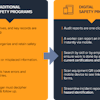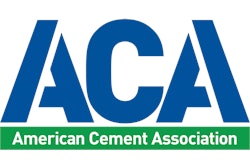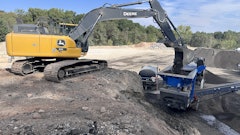Last night, the U.S. Senate passed a final surface transportation reauthorization bill that provides $305 billion to maintain and improve the nation's highways, transit systems and transportation safety programs.
The bill calls for spending approximately $205 billion on highways and $48 billion on transit projects over the next five years, paid for with gas tax revenue and a package of $70 billion in offsets from other areas of the federal budget. It also reauthorizes the Export-Import Bank through 2019.
Senate Sends $305-Billion Highway Bill to Obama
Senate approval came only hours after the legislation, dubbed the Fixing America’s Surface Transportation Act, or FAST Act, cleared the U.S. House of Representatives with broad bipartisan support. Passage in both chambers clears the way for the measure to be signed into law by President Obama.
“We've waited a long time for this moment; this is the first long-term highway bill since 2005,” said James G. Toscas, president and CEO of the Portland Cement Association (PCA). “Congress has finally proven to the American people that our nation’s transportation infrastructure is a priority. We applaud the leaders in the House and Senate for a successful bipartisan effort.”
“The overwhelming, bipartisan vote for passage of the FAST Act shows once again that transportation infrastructure is a thread that has the capacity to bind America,” said Pete Ruane, president and CEO of the American Road & Transportation Builders Association (ARTBA). ““We thank Senate Majority Leader Mitch McConnell, Senate Environment & Public Works Committee Chairman Jim Inhofe and Ranking Democrat Barbara Boxer, and House Transportation & Infrastructure Committee Chairman Bill Shuster and Ranking Democrat Peter DeFazio for their leadership in getting the bill done in a very problematic political environment.”
With the new legislation, state departments of transportation will have some reasonable long-term certainty regarding the levels of federal investments for surface transportation, say Paul Trombino, AASHTO president and Iowa Department of Transportation director.
"We have long said that states, which are the primary implementers of the federal program, need a long-term federal commitment in order to plan for and invest in the kind of transportation projects the nation needs now and well into the future to support our quality of life and economic prosperity," he says.
Good News and Bad News
According to Ruane, the FAST legislation “provides five years of funding predictability,” plus reduces federal red tape for state transportation improvement programs. “This, in turn, will help maintain employment, assists the public and private sectors to plan ahead, and it will speed up project delivery,” he stated.
“Once signed into law, this bill will begin to provide certainty, which up to this point has been severely lacking for states and cities as they’ve sought to plan and carry out projects to meet the transportation needs of their citizens," said Ed Mortimer, executive director of the Americans for Transportation Mobility (ATM) Coalition and executive director of Transportation Infrastructure, Congressional and Public Affairs for the U.S. Chamber of Commerce, which leads the ATM Coalition.
The FAST Act also seeks to provide greater flexibility for state and local governments in spending on necessary projects and an expanded focus on transportation projects that are national or regional in scope.
The legislation includes the creation of program framework to begin modernization of the National Highway Freight Network, and puts a reporting process in place that will lend more transparency and accountability to federal highway investments. “Highway users will now be able to know how and where their federal fuels taxes are being invested in their community,” Ruane stated.
In addition, it includes authorization of a federal study to analyze the impact of pavement stiffness on vehicle fuel economy, the reauthorization of the Accelerated Implementation and Deployment of Pavement Technologies (AID-PT) program and Hours of Service (HOS) exemptions for the ready-mixed concrete industry.
But as with all legislation, the bill falls short in some key areas. “Congress and the Obama Administration again sidestepped a golden opportunity to put the federal highway and transit investment program back on solid financial footing for the long-term,” Ruane noted. “Five years goes by fast. In four years, state transportation departments will again be staring at a looming funding abyss.
“Congress and the Obama Administration also fell short in providing the level of investment that would result in demonstrable improvement in the overall physical conditions, performance and safety of the system. At best, we will be treading water.”
ATM Coalition members believe Congress must continue to pursue dependable sources of funding that will meet the nation’s infrastructure needs for the long term. "It is a good thing for American communities, businesses and consumers that we’re not facing a series of short-term patches any time soon,” said Thomas W. Smith III, FASCE, Executive Director, American Society Of Civil Engineers. “But it’s not too soon to start looking down the road at the enduring need for sustainable funding solutions to put this critical national program back on solid footing for the next decade.”
“Ultimately, the country needs a dedicated, sustainable funding source to meet the nation’s tremendous and still growing transportation infrastructure needs,” said Mortimer. “However the FAST Act is a bipartisan compromise that will provide states across America with certainty around which they can plan and carry out critical transportation projects for at least five years.”




![[VIDEO] Congress Passes 5-Year Highway Funding Bill](https://img.forconstructionpros.com/files/base/acbm/fcp/image/2015/12/default.5661ed779a92d.png?auto=format%2Ccompress&fit=crop&h=167&q=70&w=250)













